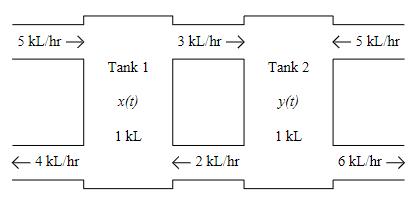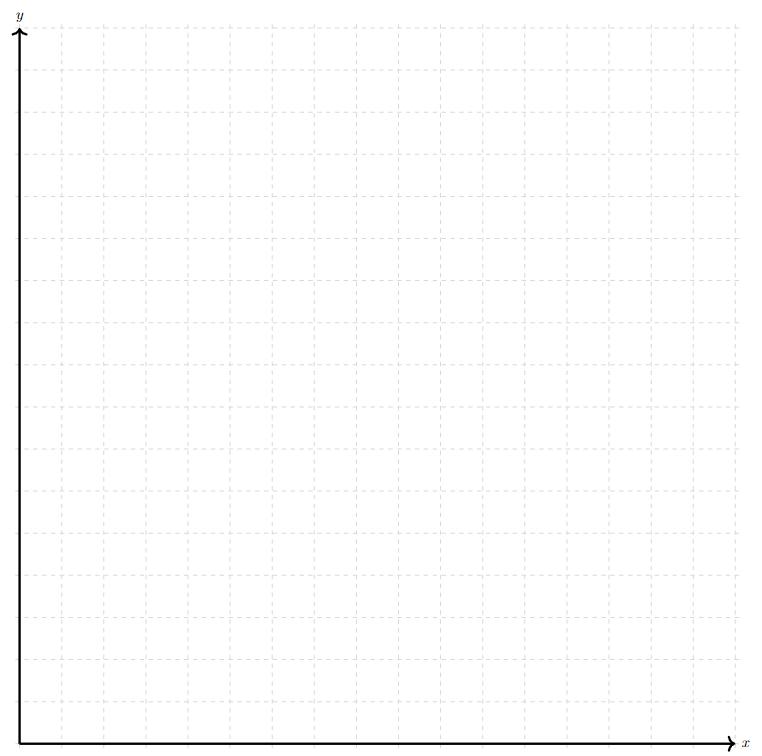Question
Two tanks are initially filled with 1 kL of pure water. A solution with 10 kg/kL of salt is flowing into tank 1 at 5
Two tanks are initially filled with 1 kL of pure water. A solution with 10 kg/kL of salt is flowing into tank 1 at 5 kL/hr. A solution with 20 kg/kL of salt is flowing into tank 2 at 5 kL/hr. Both tanks are well mixed. The resulting solution is flowing from tank 1 into tank 2 at 3 kL/hr, and from tank 2 into tank 1 at 2 kL/hr. Tank 1 is being drained at 4 kL/hr and tank 2 is being drained at 6 kL/hr. Let x(t) be the amount of salt in tank 1 in kg, and y(t) be the amount of salt in tank 2 in kg.

(a) Set up an IVP that models the amount of salt in each tank.
(b) Find the single equilibrium solution. Hint: Your equilibrium should have integer values for each component.
(c) On the next page, sketch a nullcline diagram for this system in the first quadrant. Include both the x and y-nullclines, with direction arrows on both nullclines, as well as in the large open regions between them. Finally, include two solutions curves: one that satisfies the initial data [0, 0]T and one that satisfies the initial data [40, 20]T . Once you’re satisfied, move onto parts (d) and (e) on the following page.
Carefully sketch your nullcline diagram for 1(c) here. You may use whatever scale you like, as long as you indicate it by labeling your axes.

Make sure your diagram includes all requested features, including:
• The x-nullcline(s).
• The y-nullcline(s).
• The equilibrium point from (b).
• Direction arrows on the nullclines.
• Direction arrows between the nullclines.
• The solutions requested: one satisfying [0, 0]T and one satisfying [40, 20]T .
• A scale of some sort.
(d) Based on your nullcline diagram, does the equilibrium you found in (a) appear to be stable, unstable, or semi-stable?
(e) Now, use the methods of Chapter 6 to find a solution to this IVP. Does your solution support your conclusion above? Why or why not?
5 KL/hr 4 kL/hr Tank 1 1 KL 3 KL/hr 2 kL/hr Tank 2 y(t) 1 KL 5 kL/hr 6 KL/hr
Step by Step Solution
3.49 Rating (146 Votes )
There are 3 Steps involved in it
Step: 1

Get Instant Access to Expert-Tailored Solutions
See step-by-step solutions with expert insights and AI powered tools for academic success
Step: 2

Step: 3

Ace Your Homework with AI
Get the answers you need in no time with our AI-driven, step-by-step assistance
Get Started


